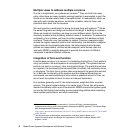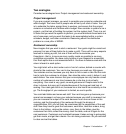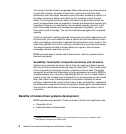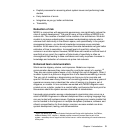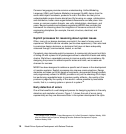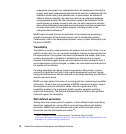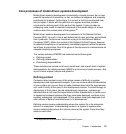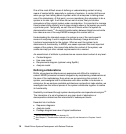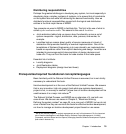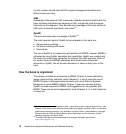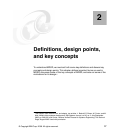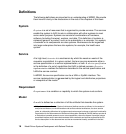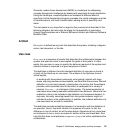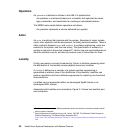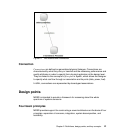
14 Model Driven Systems Development with Rational Products
One of the most difficult areas of defining or understanding context is being
aware of context shifts, especially in systems of systems. A context shift occurs
when you go from talking about a system within an enterprise to talking about
one of its subsystems. At that point, you are considering the subsystem to be a
system in its own right. It will have its own set of actors, likely to be other
subsystems of the original system under consideration. It is important to manage
these context shifts carefully, and to keep straight where in the system you are at
a particular point. Technically, we call this set of levels within the system its
decomposition levels.
17
An explicit transformation between black box and white
box views are one of the ways MDSD manages this context shift.
18
Understanding the intended usage of a system is one of the most powerful
means of analyzing it and its requirements effectively. Usage drives the
functional requirements for the system. What we want the system to do
determines its functionality. In MDSD, use cases represent the most important
usages of the system. Use cases help define the context of the system; use
cases also help put other related requirements into a context.
An essential set of artifacts is produced as we reason about context at any level:
Context diagram
Use case model
Requirements diagram (optional using SysML)
Analysis model
Defining collaborations
Brittle, stove-piped architectures are expensive and difficult to maintain or
extend. MDSD promotes horizontal integration by emphasizing collaborations at
the core of the methodology. Even when we are examining the context of a
system, we investigate how it collaborates with other entities in its domain or
enterprise. As we analyze candidate architectures and perform trade studies, we
investigate how the internal pieces of the system collaborate together to realize
its functionality.
Scalability is achieved through system decomposition and operational analysis.
19
The interaction of a set of systems at any given level of abstraction or
decomposition determines the interactions of subsequent levels.
Essential list of artifacts:
Sequence diagrams
Analysis model
Package diagram/overview of logical architecture
17
See the aforementioned citation (footnote 15).
18
See Chapter 2, “Transformation methods” on page 28, and discussion in Chapters 3 and 4.
19
Ibid.



